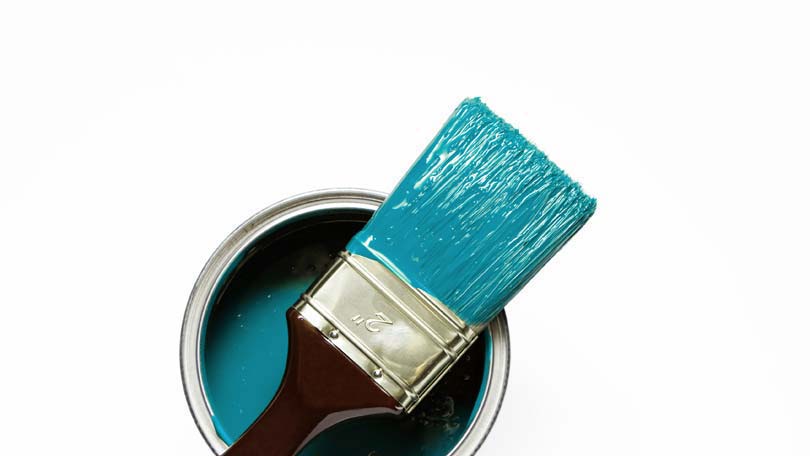
Latex paint is made from a water soluble base that is mixed with a polyvinyl material containing acrylic resin. The name latex is actually misleading because latex paint does not contain latex at all (it is therefore safe for those with latex allergy). The name is used to describe the paint as rubber based, but the rubber is not natural – it is man made. Latex paint is often used because it goes on smooth, wears well on both interior and exterior surfaces, and is relatively easy to clean up.
Using latex paint indoors is appealing because it is non-toxic and has less of an odor than oil based paints. The odors from latex paint will usually clear quickly once the paint has dried which will only take about an hour. With proper ventilation, a freshly painted room will be safe almost immediately. Latex paint is non-flammable as well and can be thinned with water; oil based paints must be thinned with solvents that are quite flammable, offering a dangerous fire hazard. Choosing latex paint keeps those foul smelling chemicals out of your home which is especially important for families with children.
Latex paint adheres best to a clean surface; it will not stick to a dirty or dusty wall so make sure to wipe down any grimy surfaces and allow them to dry before applying latex paint. Recent innovations in the paint industry have resulted in latex paints that will resist fading and yellowing, will not crack or peel, and will resist mildew in humid areas. Latex paint can be applied to masonry or galvanized steel and will provide a smooth, shiny finish.
When it comes time for touch-ups (it seems like they’re always necessary), latex paint is easier to touch up than oil-based paints. However, higher gloss latex paints will more readily show touched-up areas, so the touch-ups may not look perfect no matter what. If a second coat of latex pain is needed, it can be applied one hour after the first coat because it dries very quickly. With oil-based paints, that second coat will have to wait a full twenty-four hours (maybe more if it is rainy outside).
Widely available in many shades of color, latex paint also comes in different grades and finishes. The grade refers to the paint quality and greatly influences pricing, and the finish refers to the glossiness of the paint once it has dried (eggshell, semi-gloss, etc.). Because latex paint is water soluble, it is very easy to clean up if it is spilled or splattered on another surface – warm soapy water will do the trick.
One great attribute of latex paint is its environmental friendliness; it is considered a non-hazardous material so it may be disposed of with regular refuse. It should never be poured down a drain or into a sewer, but it should be allowed to dry out before disposal so that it forms a solid. To dispose of a can of latex paint with less than 1 inch of paint left, place the lid securely on the can and the put it in a tightly sealed trash bag. Dispose of this sealed trash bag with your other household garbage. If the latex paint can has more than an inch of paint left, dry it before disposal by adding kitty litter or sand (one paint company even offers waste paint hardener), or allowing the can to sit with the lid open for a few days. Once dried, replace the lid, put the can into a trash bag, seal it, and put it out for regular collection.
There are other ways to dispose of your extra latex paint such as passing it along to a friend in need, or even using it to paint a doghouse or another room in your own home. Some paint recycling agencies exist that will take in a can of used latex pain that is still in good condition and will make these half-used cans available to other residents, businesses, or schools. Be sure to check with neighbors and loved ones before you waste unused paint, you never know who may need it! Before you part with the paint, think about keeping it in case the paint gets scuffed or nicked in the future; it’s almost impossible to recreate a paint color unless you know the original color and manufacturer, so do not be too hasty in disposing of extra paint.
Latex paint is a safe, clean option for both interior and exterior work. If you need assistance selecting the proper paint for your home, consult with a local paint professional – they will help you choose the right grade and finish to make your new paint job look spectacular!
